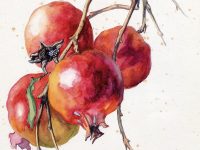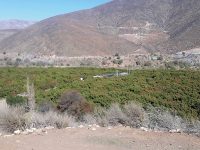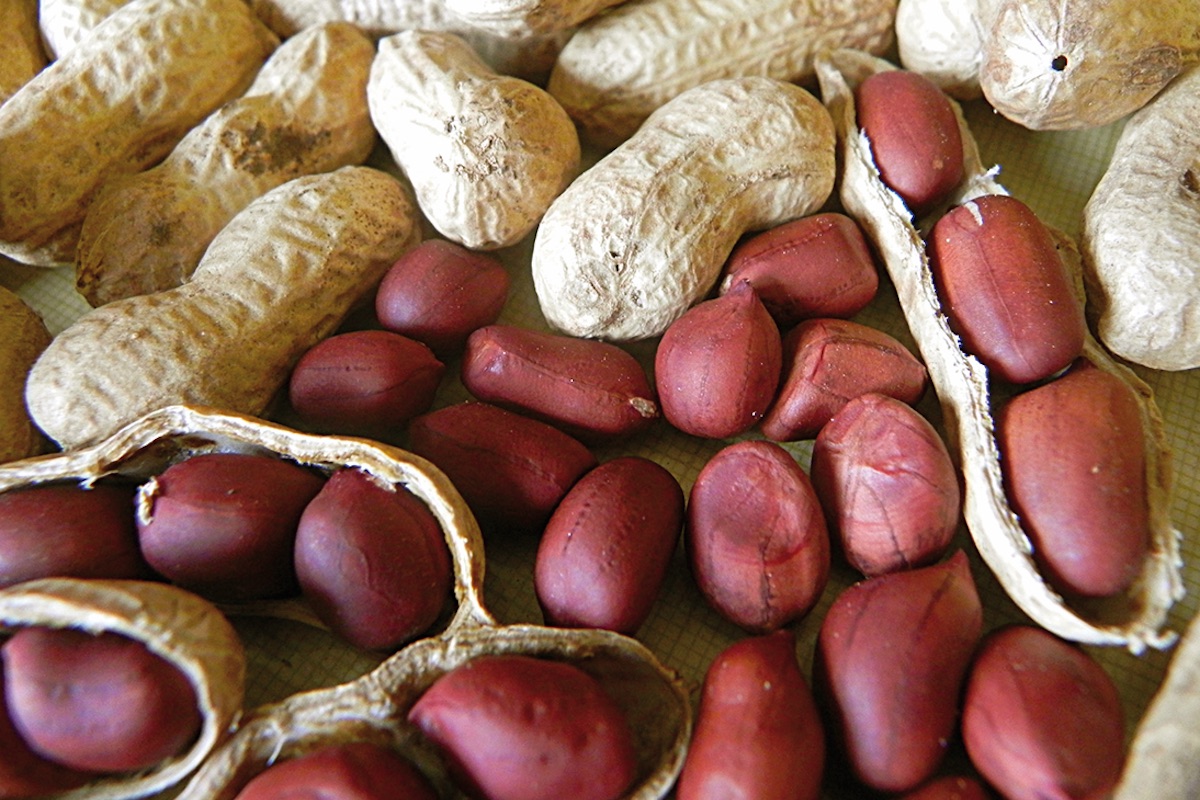
Cultivation of the modest peanut (cacau in Catalan) has become scarce and marginal. It was not like in the past, as it was an essential crop due to its seed, which was considered a staple food for people. Its shrub was important too, as it is considered a good fodder. It was a Mediterranean, especially Valencian crop. More than 80% was produced in these lands. In fact, Valencia was the first place in Europe where peanuts were cultivated.
The peanut is an American plant that was introduced in our territory by botanist Cavanilles. He does not cite it as a common crop in his first trips through the territory during 1791-93, although he visited archbishop Mayoral in his garden in Puzol, where he had peanut plants in acclimation. Years later, Cavanilles published one of his writings where he reflects on the growing importance of this crop in Valencian farmlands. It has been an emblematic food for 150 years, but local production rapidly dropped in the 1970’s while imports strongly increased.
«Peanuts were a Mediterranean, especially Valencian, crop. In fact, Valencia was the first place in Europe where peanuts were cultivated»
The peanut (Arachishypogea) is a unique plant and crop for many reasons. We will highlight in detail only a few of its important features in order to cultivate it. First, the flower of this legume has a strange behaviour: once fertilized, it looks for land to bury itself in since there is an organ called gynophore at the base of the flower that grows while hiding from the Sun. Therefore, the fruit grows underground. The second reason is its need for water: peanuts avoid the excess of humidity. Irrigation has a great agronomic importance because it does not only meet the needs of the plant, but serves as a guide and modifies its growth in order to obtain the best results.
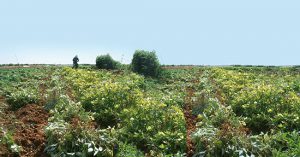
Peanut orchard. / Josep Roselló
Agronomic research is always thinking about these features. Thus, the farmer tills the soil from preliminary irrigation with several surface works. It keeps its ripeness and maintains its looseness, making it suitable for the seed’s germination first and flower blooming later. Also, Valencian farmers invented a special tool for peanuts. Its name is «barqueta», which is a semicircular artifact of about 80 centimeters that is placed below the ridge, with a cutting in the back and various cuttings of a few centimeters on the side and the bottom. The «barqueta» mows the grass and breaks the lumps to leave the earth clean, thin and loose.
Peanuts are planted between mid-May and mid-June, as it is a heat-loving plant. Preferably planted with waning moon. Every inch and a half, we leave 2 grains per hit separating each line 60 centimeters. This way, we spent about 8 kg of seed per «hanegada» (or 1,59 acres). It is planted with the ripeness that we have prepared, and it won’t be irrigated again until much later. Once the plant is born, we work the soil to prevent weeds and lengthen its ripeness and move the soil closer to the plant. Finally, after the shrubs are released, we will water them for the first time within 40 to 60 days. This thirst is forced to cause early flowering of the peanut shrubs. Thus, the flowers appear low on the plant and there is little distance between them and the ground. Farmers have found that very few tall flowers reach the ground and give very poor result in any case.

Peanut plant detail. / Josep Roselló
After that, we water them three times every two weeks. It is not good to provide more water, maybe an extra irrigation close to the harvest –around September or October– if necessary. In total, it should receive four or five waterings. The latter is very important: it should be done on dry land as it prepares the ground to make it spongier. It is usually harvested manually, stretching and pulling off the whole plant hard while picking up the peanuts. If we have planted in strong land varieties such as «cacaua», it can be released with a hoe because many husks can be lost if we do not do it that way. Once pulled off, it should get dry in the sun for a day or two in bundles or sheaves in the field itself, and shaking the plants, we separate the shrubs from the peanut husks. Peanuts will dry later in a suitable place. There, they will lose more moisture to reach the ideal point for conservation, we’ll know it if the peanut «sings» while shaking it.
We will get peanuts in our orchard if the soil is loose. We will work well to hold the ripeness. Instead of fertilising the peanuts, we will use the remains of the previous crop. We will break the husks to take the seed just a few days before planting, and we will continue with the irrigation using the same process explained as far as possible. If we follow the plan, we will have a good harvest of peanuts by autumn, consuming them whenever we want as they will be well preserved once completely dried. And, most importantly, we will rescue a historical Valencian crop from oblivion while we witness the behaviour of an exceptional legume.
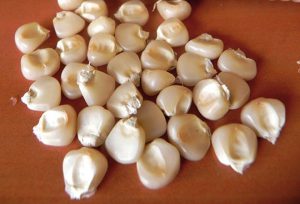
White corn. / Josep Roselló
The best fruits: El Comtat’s «white» corn
Corn crops are very common in our agricultural districts, both rain fed or irrigated. Normally, the varieties have been traditional of each place until the advent of hybrid seeds. Sadly, the great diversity of traditional varieties has disappeared fast. The new variety provides good production as long as it receives fertilizers and water, but the seeds can’t be preserved because the second generation of an industrial hybrid does not have the characteristics of the first one. This means that after a few years of cropping hybrid corn, the seeds are lost due to lack of use. On the other hand, the farmer has to buy every year new seeds to the providing company, becoming dependent on them when they were previously self-sufficient.
But in some places, traditional corn varieties are still kept by their virtues and specific uses. For example, in the region of El Comtat, farmers preserve and appreciate a variety of corn called «white», as they have a typical dish called fried corn. To enjoy this delight, the ear is harvested while the grain is still tender, mostly in late summer, and it is fried with a handful of salt. Local farmers say that «with a corn dish and a beer… from there to heaven».
«White corn» variety adapts well to poor dry land, but the more watered, the better. It is sown with broad blows in order to work between the lines, and because the little water available is better used. Its grain is ivory white, with the ear being considerably big. When the grain becomes hard, it is not useful for the «picadeta» («snack time» in Catalan) and it is saved to feed pets.
Do not forget to try a dish of fried «white» corn in the villages of El Comtat with a very cold beer. You already know… from there to heaven.

